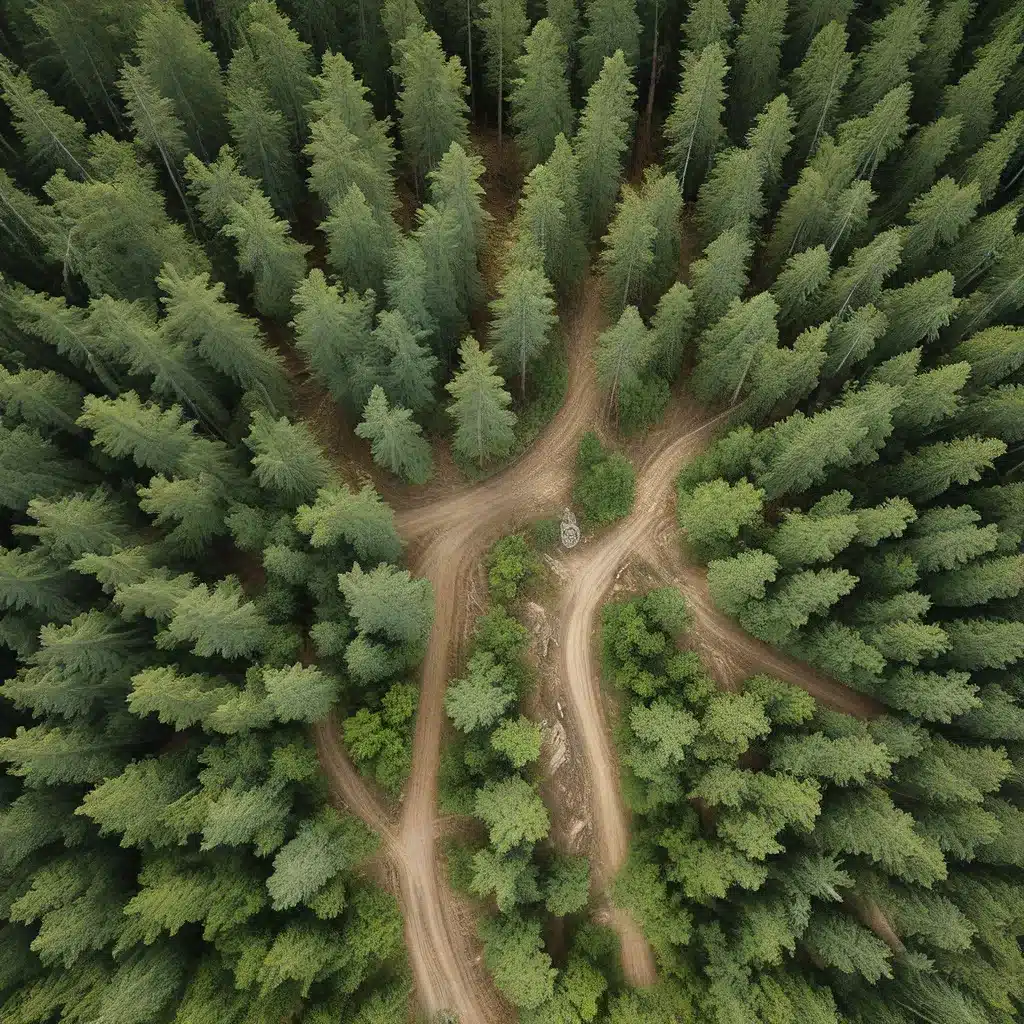
In the age of digital transformation, the forestry industry is undergoing a remarkable shift, driven by the adoption of sensor networks and Internet of Things (IoT) technologies. These advancements are revolutionizing the way we approach sustainable forest management, enabling data-driven decision-making and optimizing the utilization of natural resources.
The Rise of Sensor-Driven Precision Forestry
Precision forestry, a term that has gained significant traction in recent years, refers to the integration of advanced technologies, such as sensors, drones, and GPS, into forestry practices. This approach aims to enhance the efficiency and sustainability of forest management by providing real-time data on various parameters, including tree health, soil conditions, and environmental factors.
Sensor networks are the backbone of this transformation, serving as the crucial link between the physical forest environment and the digital realm. These networks of interconnected sensors, strategically deployed across forested areas, gather a wealth of data that can be analyzed and utilized to optimize forestry operations.
Unlocking the Potential of Sensor Data
The data collected by sensor networks in precision forestry applications is a goldmine of insights, enabling forest managers to make informed decisions and enhance their overall operations. Soil moisture sensors, for instance, provide valuable information about the water content in the soil, allowing for precise irrigation and monitoring of drought conditions. Climate sensors, on the other hand, track environmental factors such as temperature, humidity, and precipitation, enabling proactive measures to address the impact of climate change on forest ecosystems.
Moreover, tree health sensors can detect early signs of disease or stress, empowering foresters to take timely action and prevent the spread of infestations. This data-driven approach not only improves the overall health and resilience of forests but also contributes to the prevention of deforestation and the conservation of natural habitats.
Optimizing Resource Utilization
One of the key benefits of sensor-driven precision forestry is the optimization of resource utilization. Sensors monitoring tree growth, biomass, and timber quality can help foresters make more informed decisions about when to harvest, ensuring that trees are harvested at their optimal maturity. This, in turn, reduces waste and maximizes the productivity of forest resources.
Additionally, sensor-enabled logistics and supply chain management can enhance the efficiency of timber transportation and distribution, minimizing carbon footprint and ensuring that forest products reach their destination in the most sustainable manner.
Enhancing Forest Monitoring and Conservation
Sensor networks in precision forestry also play a crucial role in enhancing forest monitoring and conservation efforts. Drones equipped with high-resolution cameras and thermal sensors can conduct aerial surveys, identifying areas of concern, such as illegal logging, encroachment, or wildfire risk. This real-time monitoring enables prompt intervention and helps forest authorities enforce regulations more effectively.
Moreover, sensor-driven data analytics can provide valuable insights into ecosystem dynamics, allowing researchers and policymakers to develop more informed strategies for forest conservation and sustainable management. By understanding the complex interactions between various forest components, such as wildlife, vegetation, and water resources, stakeholders can make more informed decisions that prioritize the long-term preservation of these precious natural assets.
Overcoming Challenges in Sensor Network Implementation
While the benefits of sensor-driven precision forestry are undeniable, the implementation of these technologies is not without its challenges. Connectivity and data transmission in remote forested areas can be a significant hurdle, requiring robust communication infrastructure and reliable power sources. Additionally, the integration of diverse sensor types and the management of vast amounts of data can pose technical and logistical challenges.
To address these challenges, industry players are exploring innovative solutions, such as low-power wide-area networks (LPWANs), satellite-based communication, and edge computing to enhance connectivity and data processing capabilities in remote forestry environments. Furthermore, advancements in machine learning and artificial intelligence are enabling more efficient data analysis and decision-support systems, streamlining the implementation of sensor-driven forestry practices.
The Future of Sensor-Driven Precision Forestry
As the global smart agriculture market continues to grow, with an anticipated value of $601 billion by 2033, the forestry industry is poised to embrace the transformative power of sensor networks and IoT technologies. The integration of digital tools, such as sensors, drones, and data analytics, is expected to drive the adoption of precision forestry practices worldwide, addressing the increasing demand for sustainable resource management.
By harnessing the power of sensor-driven precision forestry, we can optimize the utilization of forest resources, enhance conservation efforts, and mitigate the impact of climate change on our vital forest ecosystems. As this technology-driven transformation continues to unfold, the sensor networks industry plays a crucial role in supporting the forestry sector’s transition towards a more sustainable and data-driven future.
Conclusion
In the realm of sensor-driven precision forestry, we are witnessing a paradigm shift that is transforming the way we manage and preserve our forests. By leveraging the power of sensor networks and IoT technologies, forest managers can make more informed decisions, optimize resource utilization, and enhance conservation efforts, ultimately paving the way for a more sustainable and resilient forestry industry.
As the global demand for smart agriculture and precision forestry continues to grow, the integration of advanced digital tools will become increasingly essential. The future of forestry lies in the seamless collaboration between technology and environmental stewardship, where sensor-driven insights drive the responsible and efficient management of our precious forest resources.